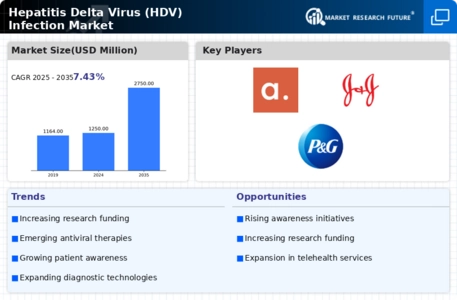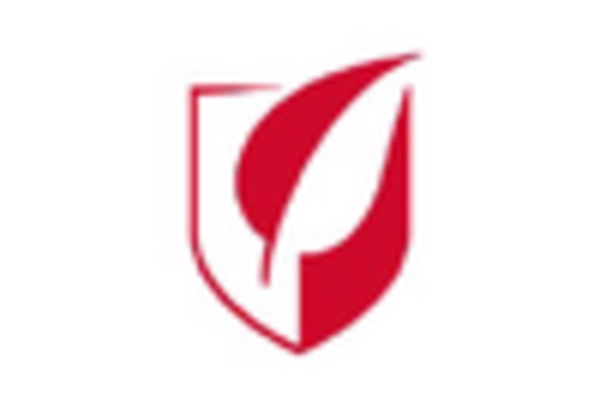Market Growth Projections
The Global Hepatitis Delta Virus (HDV) Infection Market Industry is projected to experience substantial growth, with a market value of 1250 USD Million in 2024. This growth trajectory is indicative of the increasing focus on addressing HDV infection globally. By 2035, the market is expected to reach 2750 USD Million, reflecting a compound annual growth rate (CAGR) of 7.43% from 2025 to 2035. Such projections underscore the potential for innovation and investment in the HDV sector, highlighting the importance of ongoing research and development efforts to meet the needs of the growing patient population.
Emerging Treatment Options
The development of novel therapeutic agents for Hepatitis Delta Virus (HDV) infection is a significant driver for the Global Hepatitis Delta Virus (HDV) Infection Market Industry. Recent advancements in antiviral therapies, including interferon-based treatments and new oral agents, offer promising outcomes for patients. The anticipated approval of these therapies is expected to enhance treatment options available to healthcare providers, thereby improving patient management. As the market evolves, the introduction of effective treatments is likely to attract investment and research efforts, contributing to a projected market value of 2750 USD Million by 2035, with a CAGR of 7.43% from 2025 to 2035.
Regulatory Support and Funding
Support from regulatory agencies and increased funding for Hepatitis Delta Virus (HDV) research are crucial factors driving the Global Hepatitis Delta Virus (HDV) Infection Market Industry. Governments and health organizations are recognizing the need for targeted interventions to combat HDV, leading to the allocation of resources for research and development. This financial backing not only fosters innovation but also encourages collaboration between public and private sectors. As funding initiatives expand, the market is likely to witness accelerated growth, facilitating the development of new therapies and improving access to care for affected populations.
Increasing Prevalence of HDV Infection
The rising incidence of Hepatitis Delta Virus (HDV) infection globally is a primary driver for the Global Hepatitis Delta Virus (HDV) Infection Market Industry. As of 2024, approximately 15 million individuals are estimated to be infected with HDV worldwide, with significant concentrations in regions such as Asia and Africa. This growing patient population necessitates enhanced diagnostic and therapeutic solutions, thereby propelling market growth. The urgency to address HDV, particularly in endemic areas, is likely to stimulate investments in research and development, contributing to the overall market expansion.
Advancements in Diagnostic Technologies
Technological innovations in diagnostic methodologies are significantly influencing the Global Hepatitis Delta Virus (HDV) Infection Market Industry. Enhanced testing techniques, including molecular diagnostics and serological assays, facilitate early detection and accurate monitoring of HDV infection. These advancements not only improve patient outcomes but also encourage healthcare providers to adopt more effective screening protocols. As a result, the demand for sophisticated diagnostic tools is expected to rise, further driving market growth. The integration of these technologies into clinical practice is likely to enhance the overall management of HDV, thereby expanding the market.
Growing Awareness and Education Initiatives
Increased awareness and educational campaigns regarding Hepatitis Delta Virus (HDV) are pivotal in shaping the Global Hepatitis Delta Virus (HDV) Infection Market Industry. Public health organizations and governmental bodies are actively promoting knowledge about HDV transmission, prevention, and treatment options. This heightened awareness is crucial in reducing stigma and encouraging individuals to seek testing and treatment. As more people become informed about the risks associated with HDV, the demand for healthcare services is likely to increase, thereby contributing to market growth. The focus on education is expected to play a vital role in addressing the HDV burden.

















Leave a Comment